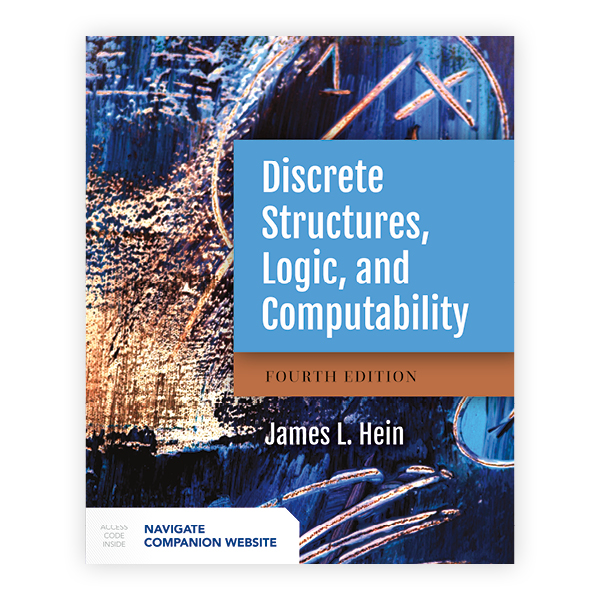
Think of digital watches versus analog watches (ones where the second hand loops around continuously without stopping).Combinatorics and Graph Theory Optimization and Operations Research Theoretical Computer Science Discrete Geometry Applied Probability and Statistics.Please note that the information about course delivery will be updated in accordance to current guidance nearer the start of Michaelmas Term.Discrete Mathematics - Sets. In contrast, continuous mathematics deals with objects that vary continuously, e.g., 3.42 inches from a wall. Discrete mathematics deals with objects that come in discrete bundles, e.g., 1 or 2 babies.
To prove that a proposed solution does work as specified, one needs to apply the principles of mathematical logic, and to use proof techniques such as induction. For instance, to specify computational problems precisely one needs to abstract the detail and then use mathematical objects such as sets, functions, relations, orders, and sequences. OverviewIn order to be able to formulate what a computer system is supposed to do, or to prove that it does meet its specification, or to reason about its efficiency, one needs the precision of mathematical notation and techniques. Set theory forms the basis of several other fields of study like counting theory, relations, graph theory and finite state. He had defined a set as a collection of definite and distinguishable objects selected by the means of certain rules or description.
This set of Discrete Mathematics Multiple Choice Questions & Answers (MCQs) focuses on. Students will learn:Discrete Mathematics Questions and Answers Discrete Probability. Because of this, finite mathematics is a terminal math course for many students, whereas discrete mathematics is an introductory course for its constituency.This is an introductory course on discrete mathematics. Course Information: Credit is not given for both CS 173 and MATH 213.Discrete mathematics emphasizes mathematical induction and proofs, while finite mathematics avoids proofs and emphasizes applications and intuitive understanding. Learning outcomesDiscrete mathematical structures frequently encountered in the study of Computer. The Discrete Mathematics course aims to provide this mathematical background.
Discrete Structures Vs Discrete Math How To Count Some
Writing mathematical proofs, double inclusion proofs for set equality, proof by cases. Definition of sets, subsets, standard set operations union, intersection, relative complement, symmetric difference, complement, cartesian products, power sets algebraic laws cardinality of finite sets. The weekly "extra topic" is to round out the material and will only be covered in lectures if time permits.Week 1: Sets. techniques for constructing mathematical proofs, illustrated by discrete mathematics examples.The course is to be divided into eight topics, each topic with an associated proof technique or style. how to count some different types of discrete structures how to use and analyse recursive definitions

Definition of modular arithmetic via an equivalence relation properties of addition, multiplication, and exponentation (mod n) Euclid's algorithm, binary MOD and DIV functions, multiplicative inverses (mod p). Extra topic: solving linear recurrence relations.Week 6: Modular Arithmetic. Sequences and recurrence relations sigma notation and partial sums of sequences recurrence relations arising from counting problems, including derangements and partitions. Extra topic: counting relations.Week 5: Sequences.
Pre-orders, partial orders, and linear orders chains product and lexicographic order on cartesian products upper and lower bounds, lub and glb. Extra topic: solving recurrence relations of divide-and-conquer type, up to asymptotic order.Week 8: Orders. Choosing the right inductive hypothesis for big-O proofs. Proofs of sentences of the form (exists x.forall y.P) with examples of asymptotic behaviour proofs including simplified Stirling's formula. Big-O notation, tail behaviour of sequences, examples drawn from running times of common algorithms. Extra topic: representing positive integers as sums of two squares.Week 7: Asymptotic Notation.
Functions: injectivity & surjectivity, composition & inverse. SyllabusSets: union, intersection, difference, power set, algebraic laws. Extra topic: order isomorphisms.
The inclusion-exclusion principle. Functions associated with combinatorial problems: ceiling, floor, factorial, combinatorial coefficients. Combinatorial algebra: permutations, combinations, sums of finite sequences.
It is rather expensive (about £50) but there are many copies in Oxford libraries. It is pitched at a somewhat easy level, suitable for supplementing the lecture notes. Wright, Discrete Mathematics (Fifth Edition), Prentice Hall, 2003This book has much to commend it, including an enormous number of examples and exercises and a computer science oriented exposition. Available in weekly installments during lectures, and online at the end of the corresponding week. Ker, Discrete Mathematics Lecture Notes, 2009.Comprehensive, book-style, notes (not repackaged overheads). Modular arithmetic, Euclid's algorithm, and applications.
Earlier editions are equally useful. Has many good practice questions (some difficult). Grimaldi, Discrete And Combinatorial Mathematics (Fifth Edition), Addison Wesley, 2003.Some of the book is rather advanced, but also covers the basics quite well. Only covers the first half of the course.


 0 kommentar(er)
0 kommentar(er)
